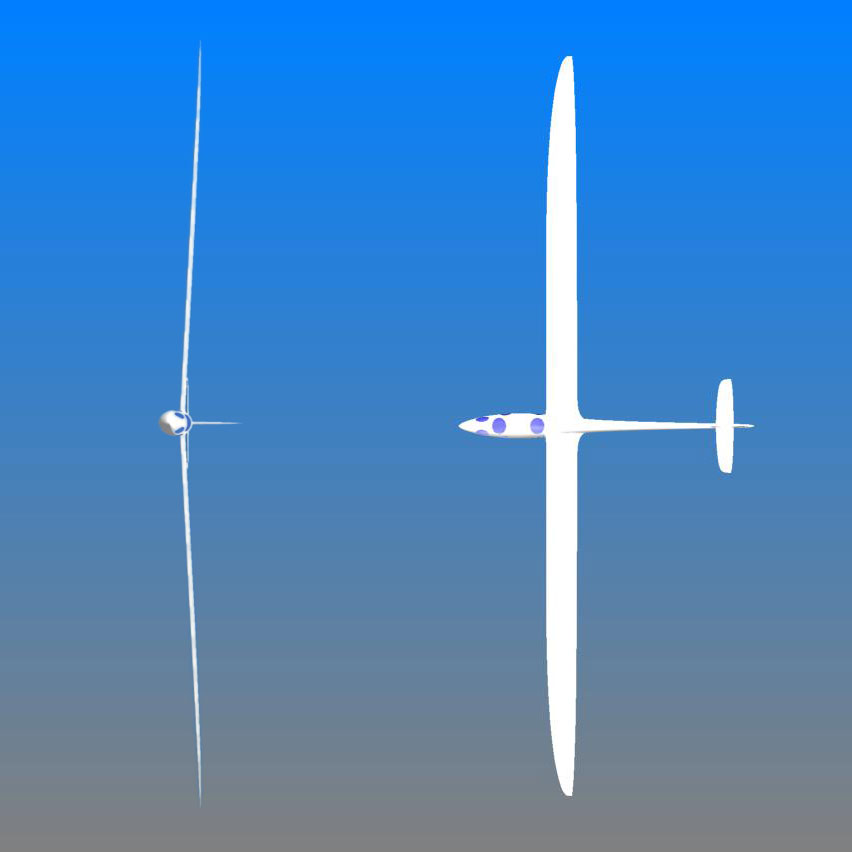 Greg Cole and his growing team at Windward Performance recently sawed a hole in the wall of one of the seven hangars they occupy at Bend Municipal Airport to make room for their newest project: a non-motorized glider designed to soar to 90,000 feet above sea level. That would set a new world record for manned, wing borne, sustained level flight.
Greg Cole and his growing team at Windward Performance recently sawed a hole in the wall of one of the seven hangars they occupy at Bend Municipal Airport to make room for their newest project: a non-motorized glider designed to soar to 90,000 feet above sea level. That would set a new world record for manned, wing borne, sustained level flight.
By Ben Jacklet
Unfortunately for Central Oregon’s economy, there’s a lot less going on at the Bend Municipal Airport than there used to be. Cessna sputtered south to Mexico, Epic Aircraft crash-landed in China was sold in bankruptcy and the Desert Sun Helicopter Academy went down in a blaze of lawsuits. In spite of those disasters, amazing things are still happening in Bend’s aviation sector.
Much of that has to do with a gifted aerodynamicist named Greg Cole, president of Windward Performance. Cole and his growing team at Windward recently sawed a hole in the wall of one of the seven hangars they occupy to make room for their newest project, a non-motorized glider designed to soar to 90,000 feet above sea level. That’s higher than any piloted plane, glider or balloon sailplane has ventured, with good reason. The air is dangerously thin and cold at that altitude, the winds potentially huge. The polar vortex, the cyclone-like wind force that would lift a glider pilot to such heights from a takeoff point near Patagonia in Argentina, has been known to reach speeds of 250 knots, and it accelerates as it climbs.
The Perlan project was one of several grandiose projects supported by the late Steve Fossett, the legendary sailor, pilot and financier who lost several fortunes on his way to making billions. Fossett used his earnings to back all sorts of radical adventures. At the time of his death in September 2007 he was financing initiatives to break the land speed record and to explore the Marianas Trench in a “flying submarine.” He was also supporting Cole’s work on the Perlan in Bend. The Perlan project stalled after Fossett’s death, but it is back on track now after a gift of $2 million from Dennis Tito, who made headlines as the world’s first “space tourist” when he joined Russian astronauts on a mission in 2001.
 With funding secured, Cole and his team are moving quickly to build a radically sleek, strong and light glider with a wingspan of 84 feet and a fully pressurized cabin (see the image to the left). Adding to the complexity of the design is the challenge of packing such a large, meticulously designed aircraft into a 40-foot shipping container, shipping it south to El Calafate, Argentina and then assembling it for flight.
With funding secured, Cole and his team are moving quickly to build a radically sleek, strong and light glider with a wingspan of 84 feet and a fully pressurized cabin (see the image to the left). Adding to the complexity of the design is the challenge of packing such a large, meticulously designed aircraft into a 40-foot shipping container, shipping it south to El Calafate, Argentina and then assembling it for flight.
A cynic might ask, Why bother? What’s the point of flying so high? What is to be gained from all the work and expense?
For one thing, there’s the knowledge that is gained only from attempting something never before accomplished — and building something never before built. Cole counts himself among the engineers and scientists of the world who are furious to see NASA scale back from space exploration and all of the benefits it has brought. In the tradition of NASA but on a far smaller scale, the Perlan will study meteorological systems from heights never before attained, possibly resulting in new knowledge about the powerful workings of the polar vortex.
Then there is the inherent value of the adventure itself. “The inspiration part can’t be overlooked,” says Cole. “Just to do something crazy. Just to show the younger generation you can do something audacious. We’ll be practically going into space — without a rocket.”
Sign me up — in principle, anyhow. I love the spirit of the Perlan project, and I love that this insanely brilliant aircraft is being designed and built in Oregon.
Ben Jacklet is managing editor for Oregon Business.

